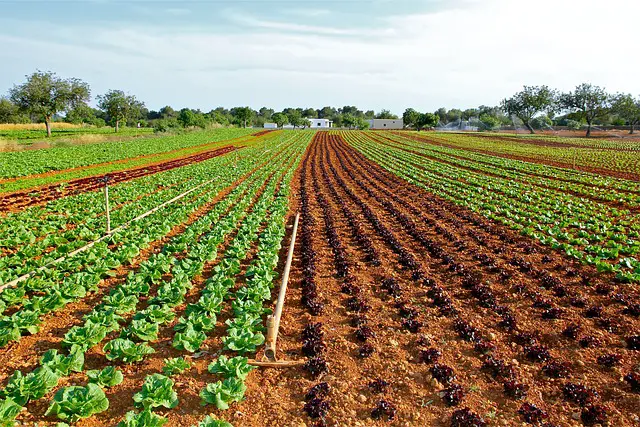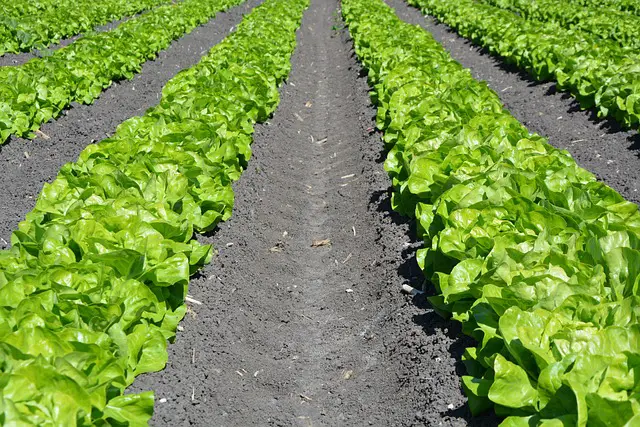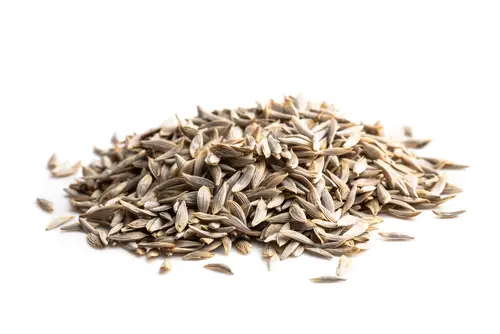Black Seeded Simpson lettuce is a popular variety of lettuce that is known for its sweet, tender leaves. If you’re interested in growing this delicious lettuce in your own garden, it’s important to know when to plant it. The timing of planting can greatly affect the success of your crop, so it’s important to get it right.
The best time to plant Black Seeded Simpson lettuce is in the early spring or fall, depending on your climate. In most areas, it’s best to plant this lettuce in the spring or fall, as it can become bitter during hot summer weather.
However, in cooler climates, it can be grown throughout the summer months as well. Understanding the ideal conditions for planting is key to growing a healthy crop of Black Seeded Simpson lettuce.
Key Takeaways
- Black Seeded Simpson lettuce is best planted in early spring or fall, depending on your climate.
- It’s important to understand the ideal conditions for planting this lettuce to ensure a healthy crop.
- Timing is crucial when planting Black Seeded Simpson lettuce, and it’s best to avoid planting during hot summer weather.
More on this category:
- When to Plant Caladium Bulbs in Houston?
- When to Plant Apple Trees in Kentucky?
- When to Plant Alfalfa in the Fall?
Understanding Black Seeded Simpson Lettuce

Black Seeded Simpson Lettuce is a popular heirloom vegetable that belongs to the family of leafy greens. It is a loose-leaf lettuce variety that produces light green leaves that are wide and slightly curly. When fully grown, this cultivar of lettuce is extremely productive.
Black Seeded Simpson Lettuce is known for its resistance to the elements as well as infestation, making it a great crop to grow. It is a fast-growing plant that can reach maturity in approximately 30-50 days and may be harvested in as little as 40 days.
This lettuce variety is named after its discoverer, a Philadelphia seedsman named Simpson. The “black seed” in its name refers to the dark seeds that are produced by this lettuce variety.
Black Seeded Simpson Lettuce is a cool-weather crop and grows best in spring or fall when the temperature is between 60-65°F. It can be grown in containers or directly in the ground.
When planting Black Seeded Simpson Lettuce, the seeds need light to germinate, so they should be sown at a very shallow depth by covering with a thin layer of growing medium.
Sow the seed 1/8 inch deep, 1 inch apart in rows 12 to 18 inches apart. When the plants have two or three true leaves, thin to 12-inch spacings for crisphead varieties, 6 to 10 inches for other types.
When to Plant Black Seeded Simpson Lettuce
Black Seeded Simpson lettuce is a cool-season crop that prefers to grow in temperatures ranging from 45°F to 75°F. It is best to plant this lettuce variety in early spring or late summer to avoid the hot summer weather that can cause the leaves to become bitter.
Before planting, ensure that the soil is well-draining, rich in organic matter, and has a pH level between 6.0 and 7.0. Black Seeded Simpson lettuce prefers full sun but can tolerate some shade.
To prepare the soil for planting, loosen it to a depth of at least 6 inches and remove any weeds or debris. Adding compost or aged manure to the soil will help to improve its texture and fertility.
When planting, sow the seeds at a depth of 1/8 inch, 1 inch apart in rows 12 to 18 inches apart. Keep the soil consistently moist until the seeds germinate.
To maintain optimal growing conditions, keep the soil temperature between 50°F and 60°F. If the soil temperature rises above 75°F, the seeds may become dormant, and the plants may not germinate.
How to Plant Black Seeded Simpson Lettuce

Black Seeded Simpson lettuce is a popular variety of lettuce that is easy to grow. Planting it is a straightforward process that can be done in a variety of ways. Here are some tips on how to plant black seeded simpson lettuce:
1. Planting from Seeds
When planting black seeded simpson lettuce from seeds, it is important to start the seeds indoors or sow them outdoors in the right conditions. For an early start, seeds can be started in flats 4 weeks prior to the last frost and transplanted outdoors in mid to late spring.
To sow the seeds outdoors, prepare the soil by removing any weeds and rocks and loosening the soil. Spread the seeds thinly in rows 1-2 feet apart and cover them with a thin layer of soil. Keep the soil moist and the seeds should germinate in 7-14 days.
2. Transplanting Seedlings
Another way to plant black seeded simpson lettuce is to transplant seedlings. Start by preparing the soil in your garden bed or container. Dig a hole that is slightly larger than the root ball of the seedling and place the seedling in the hole.
Cover the roots with soil and gently firm the soil around the seedling. Water the seedling immediately after transplanting.
3. Planting in Rows
When planting black seeded simpson lettuce in rows, prepare the soil by removing any weeds and rocks and loosening the soil. Make shallow trenches with a hoe or rake, about 1/4 inch deep. Sow the seeds thinly in the trenches and cover them with a thin layer of soil. Keep the soil moist and the seeds should germinate in 7-14 days.
4. Planting in Containers
Black seeded simpson lettuce can also be planted in containers, which is a great option for those who have limited space. Choose a container that is at least 6 inches deep and has drainage holes.
Fill the container with a good quality potting mix and sow the seeds thinly on top of the soil. Cover the seeds with a thin layer of soil and keep the soil moist.
Caring for Your Lettuce
Black Seeded Simpson lettuce is a relatively easy crop to grow, but it still requires proper care to thrive. Here are some tips to ensure that your lettuce grows healthy and strong:
1. Watering
Lettuce needs consistent moisture to grow well. It is important to water your lettuce regularly, especially during dry spells. However, be careful not to overwater your lettuce as this can cause the roots to rot. It is best to water your lettuce deeply once or twice a week rather than lightly every day.
2. Fertilizer

Lettuce is a heavy feeder and requires regular fertilization to grow well. You can use either organic or synthetic fertilizer, but be sure to follow the instructions carefully. Too much fertilizer can cause your lettuce to grow too quickly, resulting in a bitter taste.
3. Light Frost
Black Seeded Simpson lettuce is more weather-resistant than other varieties of lettuce and can withstand light frost. However, if the temperature drops below 28°F (-2°C), your lettuce may freeze and die. If you live in an area with cold winters, it is best to plant your lettuce in the spring or fall.
4. Growing
Lettuce grows best in partial shade, especially in hotter climates. If you live in an area with hot summers, it is best to plant your lettuce in a spot that gets morning sun and afternoon shade. Lettuce is also a good crop to plant in succession, meaning you can plant a new crop every few weeks to ensure a continuous harvest.
Harvesting and Storing
When it comes to harvesting Black Seeded Simpson lettuce, it is important to do it at the right time. The best time to harvest this lettuce is when the leaves are about 6-8 inches long and the plant has developed a full head. If you wait too long, the leaves will become bitter and tough.
One of the great things about Black Seeded Simpson lettuce is that it is a cut-and-come-again variety. This means that you can harvest the outer leaves of the plant and it will continue to produce more leaves. To harvest, simply cut the outer leaves at the base of the plant, leaving the inner leaves to continue growing.
It is important to note that Black Seeded Simpson lettuce is best when eaten fresh. If you are not going to eat it right away, it is important to store it properly to ensure it stays fresh as long as possible.
To store Black Seeded Simpson lettuce, start by washing the leaves thoroughly and drying them completely. Then, wrap the leaves in a damp paper towel and place them in an airtight container or plastic bag. Store the container or bag in the refrigerator for up to five days.
Potential Pests and Problems
When growing Black Seeded Simpson lettuce, there are a few potential pests and problems that gardeners should be aware of. Here are some of the most common issues that may arise:
1. Pests

Lettuce is susceptible to a variety of insect pests, including aphids, cutworms, flea beetles, and slugs. These pests can cause damage to the leaves and stems of the plant, and in severe cases, may even kill the plant.
Gardeners can control these pests by using insecticidal soaps or other natural remedies, such as diatomaceous earth or neem oil.
2. Slugs and Snails
Slugs and snails are also common pests that can cause damage to lettuce plants. They tend to be most active when it is cool, damp, and dark outside. Gardeners can control these pests by using slug traps or by applying copper tape around the base of the plant.
3. Bolting
One of the biggest problems that gardeners may encounter when growing lettuce is bolting. Bolting occurs when the plant begins to produce a flowering stalk, which can cause the leaves to become bitter and tough.
To prevent bolting, gardeners should ensure that the plants are well-watered and not stressed by drought or other environmental factors.
4. Drought
Lettuce plants require consistent moisture to grow properly. If the plants do not receive enough water, they may become stressed and begin to wilt. To prevent drought stress, gardeners should ensure that the plants receive at least 1 inch of water per week, either through rainfall or irrigation.
Culinary Uses of Black Seeded Simpson Lettuce
Black Seeded Simpson Lettuce is a versatile vegetable that can be used in a variety of dishes. Its fresh and neutral flavor makes it an excellent choice for salads, sandwiches, and wraps. The ruffled leaves of this lettuce provide a different texture to the dishes, making them more interesting and appealing.
This lettuce is often used in salads, as its large, loose, light green, and lightly crumpled leaves are perfect for creating a bed of greens. The leaves are also used in sandwiches and wraps, adding a fresh and crunchy texture to the dish.
In addition to salads, sandwiches, and wraps, Black Seeded Simpson Lettuce pairs well with various soups and stir-fries. Its mild and sweet flavor complements the savory taste of soups and stir-fries, making them more flavorful and delicious.
Black Seeded Simpson Lettuce is also a perfect ingredient for many recipes. You can use it to make lettuce wraps, spring rolls, or even as a topping for pizza. Its versatility makes it a great addition to any kitchen, and its mild flavor allows it to be paired with a wide range of ingredients.
Buying and Storing Seeds

When buying Black Seeded Simpson lettuce seeds, it is important to ensure that the seeds are fresh and of high quality. The seeds should be purchased from a reputable supplier to ensure that they are free from disease and other contaminants.
Seeds can be purchased in packs or in bulk, depending on the size of the garden and the number of plants needed. A pack of seeds typically contains several hundred seeds, which is enough to plant a small garden. Larger gardens may require bulk seed purchases, which can save money in the long run.
When storing Black Seeded Simpson lettuce seeds, it is important to keep them in a cool, dry place to ensure their longevity. Seeds should be stored in an airtight container to prevent moisture from getting in and causing the seeds to mold or rot.
It is also important to label the seeds with the date of purchase and the variety of lettuce to ensure that they are not mixed up with other seeds. This will help to ensure that the seeds are used within their recommended shelf life, which is typically one to two years for lettuce seeds.
Black Seeded Simpson lettuce is an annual plant that is easy to grow and requires little maintenance. It is hardy and can be planted early in the growing season, as soon as the soil can be worked. The plant prefers cooler temperatures and can be grown in both full sun and partial shade.
Frequently Asked Questions
When is the best time to plant leaf lettuce seeds?
The best time to plant Black Seeded Simpson lettuce seeds is in early spring, as soon as the soil is workable. However, this lettuce variety can also be planted in late summer or early fall for a fall harvest.
What are the different types of lettuce seeds?
There are four main types of lettuce seeds: crisphead, butterhead, romaine, and loose-leaf. Black Seeded Simpson lettuce is a loose-leaf variety.
How do I prevent Black Seeded Simpson lettuce from bolting?
To prevent Black Seeded Simpson lettuce from bolting, make sure to keep the soil consistently moist and avoid letting the plants dry out. Additionally, planting the lettuce in a location with partial shade can help prevent bolting in hot weather.
When is the optimal time to harvest Black Seeded Simpson lettuce?
Black Seeded Simpson lettuce can be harvested when the leaves are about 4-6 inches long. For the best flavor, harvest in the morning when the leaves are crisp and cool.
What is the ideal temperature range for growing Black Seeded Simpson lettuce?
Black Seeded Simpson lettuce grows best in cool temperatures between 60-65°F. High temperatures can cause the lettuce to bolt and become bitter.
Is Black Seeded Simpson lettuce heat tolerant?
While Black Seeded Simpson lettuce is more heat tolerant than other lettuce varieties, it still prefers cooler temperatures. To prevent the lettuce from bolting in hot weather, make sure to keep the soil consistently moist and plant in partial shade.

Hey, I’m Lisa and I’ve been an avid gardener for over 30 years. I love writing, talking and living in the garden! Feel free to connect with me on my socials below

